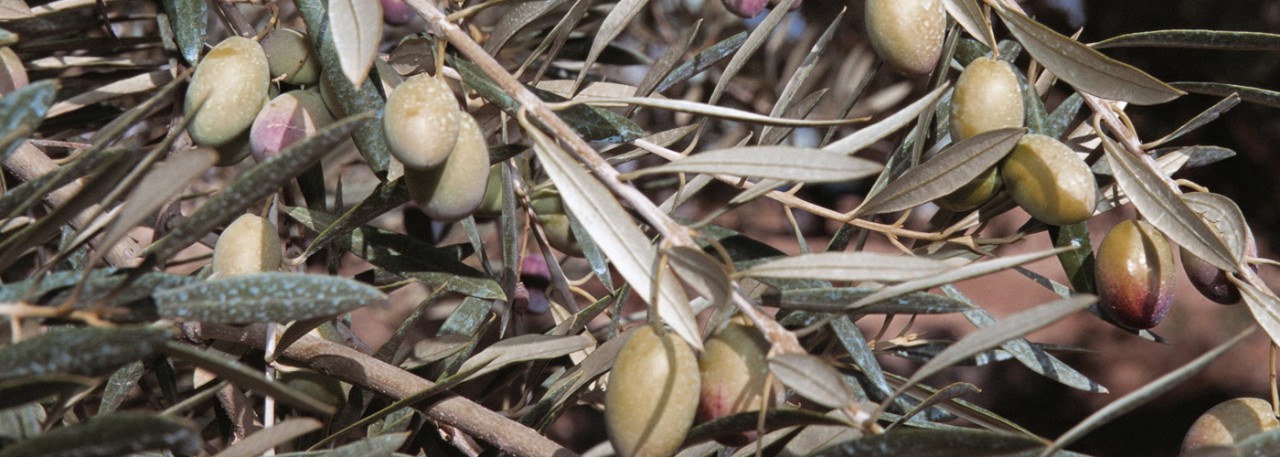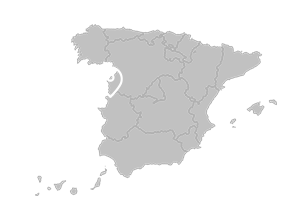.png.transform/rendition-xs/image_image%20(1).png)
Gata Hurdes PDO
Extra virgin olive oil obtained from the fruit of olive trees (Olea europea,L.) of the Manzanilla Cacereña variety.
Tasting notes
This is a slightly sweet oil in which bitterness and piquancy are beautifully balanced. It is characteristically intensely fruity, with pronounced aromas of banana, apple and newly cut grass. It is golden yellow in color when obtained from ripe olives, but can also be greenish when obtained from olives harvested before or during the period when they are changing color from green to dark.
Other notes
This is a dense oil, with an idiosyncratic acidic profile that exhibits high proportions of unsaturated to saturated fatty acids and of oleic to linoleic acids (the percentage of oleic acid is generally over 75%). This is a particularly stable oil.
Production / Processing method
Traditional planting patterns throughout the area are high to very high density, generally exceeding 250 trees per hectare (2.5 acres): this differentiates it from other olive-growing areas. The olives are grown on terraces set into very steep slopes, making the use of farming machinery problematic.
Propagation is traditionally done using woody cuttings obtained from the tree canopy when young branches are pruned. The first plantations created from semi-woody cuttings rooted in nebulized conditions are starting to emerge, alongside the traditional system. Olive-growing within the PDO area is characteristically resistant to changes of approach. However, ecological farming methods have been enthusiastically adopted. Up-to-date growers carry out one to three secondary plowings a year using a tractor and cultivator, generally in spring and early summer. Complex fertilizers are spread over the soil. Pruning styles have moved on from completely free shapes to creating low trees suited to the hand-harvesting of table olives.
The Manzanilla Cacereña variety ripens early and irregularly, and comes away readily from the tree, making it easy to harvest mechanically. The fruit must be picked directly from the tree at a time determined by the DO’s expert advisers. Olives that have been in contact with the ground must be kept separate from those taken directly from the tree.
The olives are transported to the mills in containers with due attention to cleanliness and fruit protection. They must be delivered to the mills within twelve hours of harvesting. During unloading In the mill yard, the fruit undergoes a quality inspection focusing particularly on its state of cleanliness and possible damage, disease or blight. Each batch must be clearly labeled. Quality control continues throughout the various stages of the oil-producing process. The extracted oil is stored in clearly identified tanks that meet established health and safety requirements.
Geography / Relief and climate
The relief of the area is typically mountainous, lying as it does on the southern slopes of the Cordillera Central, with altitudes ranging from 400 m to 2,000 m (1,312 – 6,561 ft). Olive-growing extends from lower altitudes up to about 800 m (2,624 ft). The soil is made up of quartz-like material, mainly granitic rocks, surrounded to a large extent by slate and sandstone.
The climate is Continental, tempered by the influence of the Atlantic. Winters are not harsh thanks to the influence of temperate Atlantic, while the Cordillera Central provides a natural barrier against winds from the north. The average annual temperature is 13.5º C (56.5º F) in the mountainous areas and 16.5º C (61.7º F) lower down. Average annual rainfall ranges from 600 to 1,300 mm (23.62 to 51.18 in).
Regulatory Council
Consejo Regulador de la DOP Gata Hurdes
Plaza de la Constitución 1
10850 Hoyos (Cáceres)
Tel: (+34) 927 417 011 / 670 666 483
gatahurdes@gmail.com
Sources:
- Spanish Ministry of Agriculture
The Manzanilla Cacereña variety ripens early and irregularly, and comes away readily from the tree, making it easy to harvest mechanically.


- Gata Hurdes 1
- Gata Hurdes 2

Hoyos (Extremadura)
